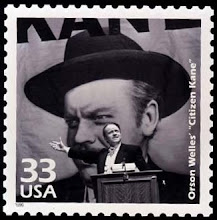Toy Story 3 is a triumph.
I, for one, had my reservations. While I feel the original is about as good as
animated films get, I’m one of those people out there who didn’t actually care
for the second film very much. Pixar has
prided itself as a brand known for original thinking, but Toy Story 2 seemed
larded with the easy type of meta-humor (Star Wars reference? Check; Star Trek
reference? Check; etc.) which dates quickly and pulls me out of the film. The movie has one show-stopper—the heartbreaking
“When She Loved Me” flashback song—and plenty of funny energy, but the
pervasive resorting to topical gags seemed more in the spirit of Family Guy
(and that is not a compliment).
But Toy Story 3 plumbs emotional depths I wasn’t expecting, especially
exploring the darker recesses of rejection, resentment, and petty tyrannies
that resonate far beyond the playground politics of childhood. Plus, the film has the courage of its
convictions, taking us to the brink of a truly apocalyptic ending that is both
terrifying and profoundly moving, while also providing us with one of the best
deus ex machinas in recent memory, earning its stripes and never, ever feeling
like a cheat.
But the one thing to which I’ve never been able to relate in
these films is the emotional attachment Andy has to his toys. They are not only springboards for his
imagination; they are also his Friends, virtual proxies for a social life. We see through the series the extent to which
he personalizes that connection, having his toys as constant companions in his
childhood, and caring about their fate practically into adulthood.
I guess that’s what I don’t get. My toys were just my toys. They weren’t confidantes, or buddies, or security
blankets. I didn’t invest them with
larger personalities, didn’t attach emotional significance to them. Did anyone?
I honestly don’t know. I didn’t
have a bad childhood by a long shot, but I did have a fairly isolated one. I didn’t have many friends, rarely went to
other people’s houses or got invited places, so I honestly don’t have a frame
of reference on what other kids or families did. My Dad was loving but logical. An engineer, so empirical. I never believed in Santa, never had a fantasy
life indulged or a creative streak nurtured.
When my mom moved up to the Bay Area, selling the house we
grew up in and Dad died in, she had an estate sale, which included all the
stuff in my room, from my childhood.
Walking down memory lane that one last time, poring through artifacts,
was fascinating but rarely sentimental. Growing up, for me, was about ostracization,
frustrated opportunities, and a singular awareness of how alone I was in the
world.
That’s why movies that are fueled by nostalgia, like Stand
By Me or American Graffiti, do very little for me. Because when it comes to that period of my life,
I never look back with fondness or warmth.
It was just passing time until my Life could really start. And maybe, in that sense, I’m not unusual
either. I just don’t know.
So for me, the first Toy Story (Lasseter, 1995) remains the best, because it
doesn’t obsess about that relationship the way the other two films do. That film is about self-actualization, coming
to terms with who or what you are, on your own and in the community to which you’re
tied. It’s that sense of community that
carries through all three films and serves as the vital backbone to the series
(helped by a marvelous cast).
As for the estate sale, I did sort through all my toys. I don’t have any children (and likely never
will), but I have two nephews, and I passed on a number of my old toys to them—not
because I felt the toys deserved to be played with, but because I thought Josh
and Caleb might get a lot of mileage out of them. That’s the relationship I understand.
OK, maybe a few of the Star Wars action figures I kept. As collectibles, you know.
Gene Autry (Scott # 4449)was part of the Cowboys of the Silver Screen series, while the flying spacemen (Scott # 2473) was part of a science fiction issue. Yoda (Scott # 4205) was its own release, separate from the Star Wars issue earlier the same year, which included Boba Fett (Scott # 4143j)




